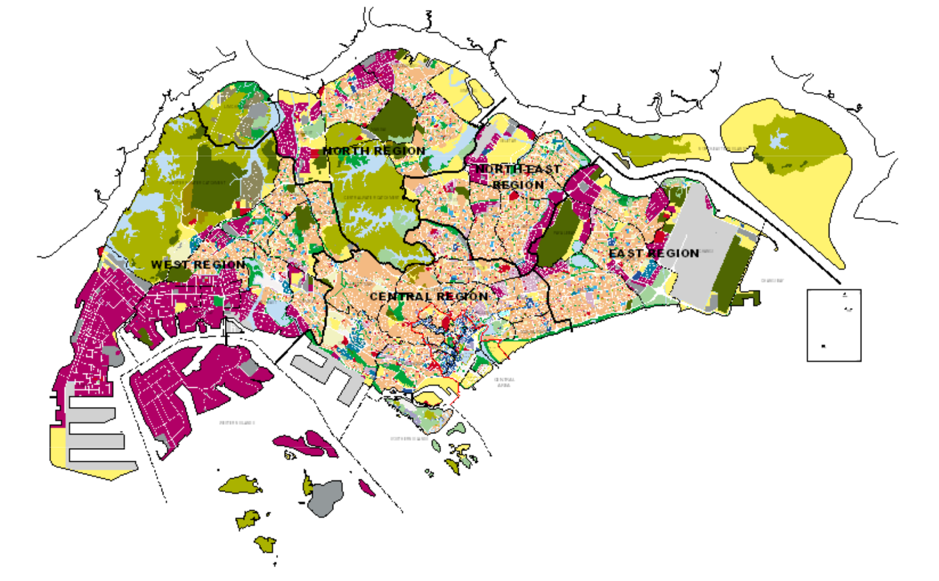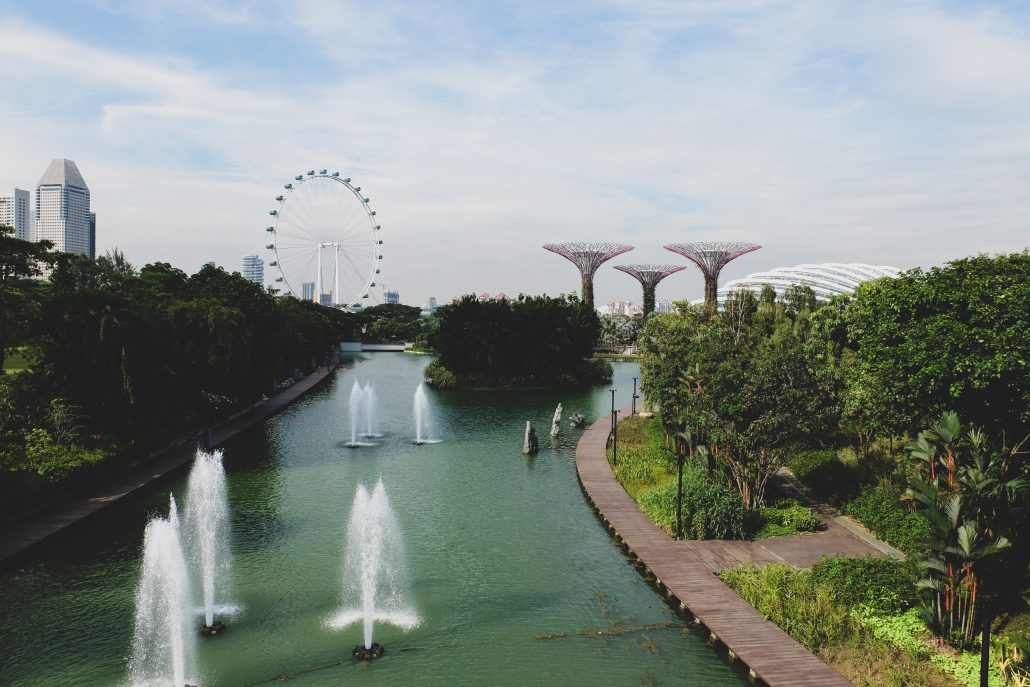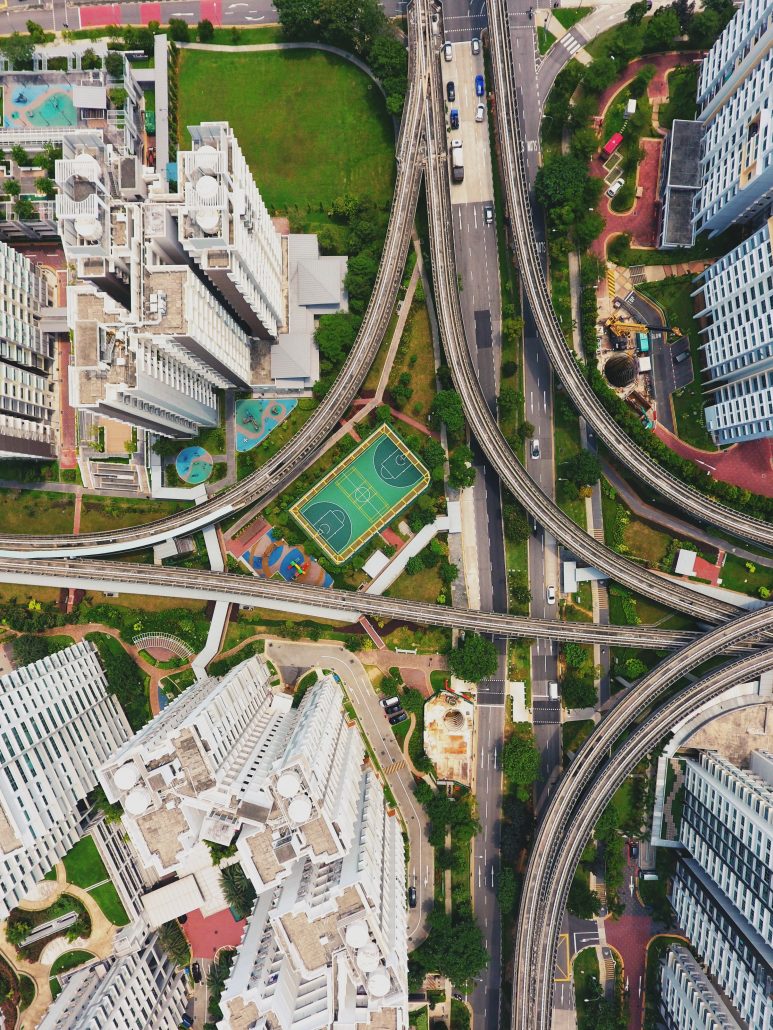
A conversion of office spaces to residential and hotel spaces in the CBD, an increase in the amount of green spaces, improved connectivity in the city and an enhanced focus on the Arts – these are some of the many changes that the URA Draft Master Plan 2019 has in place.
The URA Master Plan is a land use plan that details the government’s plan for Singapore’s development in the next 10 – 15 years. Besides being a base for the government’s future plans for the country, it also serves to provide relevant and useful information for real estate developers, property investors and people interested to purchase property. With the plan, it is easy to locate areas in which property value will appreciate over time, due to government intervention, and analyse how future developments will affect its surroundings.
Although changes that have been detailed in the URA Draft Master Plan 2019 are not final, most of these changes are likely to be implemented in reality. What will these changes mean for you as a Singaporean, and how can you make full use of the Master Plan to maximise your investments?
The following are some of the main changes; they also provide a rough idea on how to maximise usage of the plan.
-
Conversion of offices in the CBD to residential spaces and hotels
Selected office spaces in the CBD and Marina Bay area will be converted to hotel and residential spaces, rather than being used only for business. This decision follows a steady increase in CBD Grade A office rental prices in recent years. Grade A CBD office rents stand at $10.63 psf as of Q1 2019, which marks a 3.7% QoQ increase, and hitting a decade high on rent prices, according to JLL’s estimates. Among all the CBD office spaces, rents in Marina Bay stood at the highest, standing at $12.54 psf, marking a 4.8% QoQ increase.
“For the CBD, the vision is to continue to transform it into a well-connected and vibrant mixed-use district offering a dynamic and innovative business environment,” URA explained on their decision to broaden the CBD’s zoning.
To people like you and me, an increase in the supply of residential spaces in the CBD could mean more affordable residential areas in the city’s business hub, which in turn also increases convenience by decreasing travelling time to work. Having your home in the CBD also allows easy access to many parts of Singapore, with a plethora of MRT stations just a stone’s throw away, and also increases the accessibility to many amenities around the CBD area. If you are looking to invest, this might be your most opportune time to purchase a residential property in the CBD for the purpose of renting it out to office workers in the CBD.
-
Increase in green spaces
About 1,000 hectares of green spaces will be built, adding to the current 7,800 hectares of green spaces in Singapore currently. These green spaces include parks, nature areas, community gardens, nature reserves and park connectors. The eventual aim of this would be to have at least 90% of households within walking distance of a park.
In a broader sense, Singapore is expected to boast 400km worth of park connectors in total over the next 15 years.
This news comes as a great one in terms of improved walking accessibility for us all, and more green spaces mean more public areas for relaxation, gatherings, and a cooler and more aesthetically pleasing environment. Properties with increased walking accessibility and green spaces around it are also likely to have an increase in prices due to the appreciation of the intrinsic value of these properties.
-
Improved connectivity and focus on active mobility
More than 5km of cycling paths will be added to the existing 22km network already present in central Singapore. This comes in conjunction with the possible plan to transform Robinson Road, a current bus corridor connecting two big business hubs Raffles Place and Tanjong Pagar, into a transit-priority corridor, by allocating more space to buses, cycling paths and pedestrian walkways.
Another change in accessibility is highlighted by the plan that by 2021, all buildings in the downtown city area will be within a 10-minute walk to an MRT station. This comes hand-in-hand with the many plans to expand the city’s public transportation system, with the addition of many different subway lines and stations on existing lines.
Improved connectivity in the city will benefit everyone who commutes to anywhere for whatever purpose. Excessive travelling times will be cut, and shorter commuting journeys mean more time for the important things in life.
In the near future, you can finally fulfil that dream of cycling comfortably and safely in Downtown Singapore, with the many improvements and upgrades in the cycling paths and amenities. This could possibly be an alternative for both private cars – which are costly and heavily increases road traffic – and public transportation, which can be time-consuming and squeezy during peak hours. Building a car-lite Singapore not only improves congestion, but also improves the environmental condition of Singapore, by reducing carbon emissions from private vehicles, hence allowing an improvement in air quality.
-
Revitalisation and rejuvenation of areas
Paya Lebar Air Base will be vacated, freeing up 800 hectares of land, which is expected to be developed into a new HDB town.
The stretch from Pasir Panjang to Marina East will be developed into a 2,000 hectare Greater Southern Waterfront, with this project set to begin within the next 5 – 10 years. This will be a significant waterfront node that will give the district its own unique identity.
Several locations including Pasir Panjang Power District, the former Bukit Timah Fire Station, and the Beauty World area, which will be transformed into new lifestyle and heritage destinations.
Downtown city heritage and arts districts in Bras Basah, Bugis, Civic District and Fort Canning will be expanded and enhanced, with improvements to be implemented over the next few years.
These improvements in the arts scene will mean more outlets for expression, more areas and structures to interact with the arts, and an overall improvement in Singapore’s aesthetic beauty and involvement in the arts. The land that Paya Lebar sits on now could possibly be a BTO location if you are looking to settle down in the near future, while the development of a Greater Southern Waterfront signals a new destination for waterfront activities and living, spicing up the Southwest area, and giving it a new, non-industrial lease of life.
In conclusion,
The URA Draft Master Plan 2019 details several plans for Singapore’s future land use, including but not limited to:
- A shift of focus from office-intensive spaces in the CBD, to a mixed-use district which includes housing and hotel options
- Increase of green spaces in the city
- Improved connectivity and encouraging active mobility and a car-lite Singapore
- Rejuvenation of old, and creation of new heritage and arts districts
These changes come in conjunction with the addition of several new lines in Singapore’s subway system, and increases transportation convenience for everyone, while building a car-lite Singapore. A rejuvenation of the Arts in Singapore also allows for a greater involvement in the scene, which signals an improvement in the current focus on the Arts. If you’re looking to invest or looking for a new location in the city to relocate to, this might be an opportune time to make use of the land use plan to maximise your earnings or to find a suitable location to relocate.
Want to find the best mortgage rate in town? Check out our free comparison service to learn more!
Read more of our posts below!



